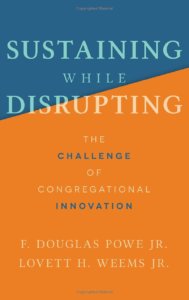Systems resist change because their core function is to ensure people repeat established behaviors. However, systems can change when they believe it’s essential for survival or maintaining core values. Dan Hotchkiss writes that church leaders can facilitate this by understanding the system’s resistance, valuing consistent efforts, and introducing change at the right moment.
I have come to trust a simple, two-part explanation for why systems resist change so strongly, and why they sometimes manage to change anyhow:
- Systems resist change because their basic function is to get people to engage in repetitive behavior. Resisting change is not a choice a system makes—it’s what a system is. Much of the good that systems do comes from persuading people to keep doing what they’re doing.
- Systems change when they come to believe change is the best or only way they can remain what they most truly are. Systems change when their existence is threatened, or when they are persuaded that the actions they repeat can no longer produce the results they cherish.
The first principle explains why institutional change is rare. As with any habit, people sometimes practice change-resistance to excess, turning productive work into a pointless compulsion. White congregations often say they want to become more diverse. Small groups say they mean to grow. Old groups say, “Young people are our future.” But if you check back with them a year later, these systems still are repeating the whole repertoire of actions that created—and that now sustain—the status quo.
The second principle points to a practical strategy for change. Systems are more than bundles of repetitive behavior: for their most devoted members, systems carry cherished meanings—that’s why their members work so hard! When those meanings are at risk, people cling less tightly to the trappings—buildings, programs, objects, tasks, and roles. They embrace change not for its own sake, but to preserve what is most important to them.
Why congregations change
For systems, change resistance is the rule. And yet sometimes congregations choose to change—and do. They move to a new part of town, connect with a new racial or ethnic group, or share space with a new and different congregation even as their old one enters its decline. Change happens, often when it has become a way to prevent an even greater change—the loss of meaning and purpose.
Conservative congregations—especially those with a clear vision of the difference they intend to make—can have an advantage. People who believe their ministry saves people from eternal suffering, for example, may be more willing to accept an unfamiliar style of music that might help them save more souls. Liberal churches’ sense of purpose tends to be a little fuzzier—it doesn’t have to be that way, but it often is—weakening their motivation to consider change.
Systems resist change, but sometimes they change anyway if they can enlist the power of change-resistance in support of change. When people face the loss of what is most important, they become more flexible about the little stuff.
How leaders help
How can a congregation shift from change-resistant to change-friendly? One way is to run out of money. Lack of money, sadly, is the most frequent reason congregations reconsider old patterns. By then, human resources generally are running low as well, making a real turnaround unlikely. For change to be useful, it must come while the system is healthy and resourced enough to carry a change through.
Leaders are the key. Driven by passion and vision, lay and clergy leaders can move systems to the brink of change—but only if they play their roles adroitly. Here are some bits of advice that may be helpful if you find yourself frustrated by your congregation’s change resistance:
Appreciate the people who repeat what worked before. Most of the good that organizations do comes from repetition. Small efforts accumulate into great results. Teachers teach, lay visitors visit and check in on people, choirs practice, gardeners weed, and teachers show up for their students—and lives are changed, more often for the better than we realize. Instead of being frustrated by your faithful worker bees, thank them, and connect their work to the ultimate purpose of the congregation. If that connection happens to be weak or out-of-date, don’t worry about that—celebrate it anyway.
Wait for the right moment. A long time ago, I was accused of being a “young man in a hurry.” Today I know that old men have reasons of their own for being in a rush! I’ve learned it’s rarely smart to be the first to grab the banner of change. A much better approach—especially if you’re the designated leader—is to encourage others to suggest and push for change. You’ll have more power to lead change if you wait till you’re the mediator of conflicting forces than by leaping out front prematurely on your own. As a seminary dean used to say to each new crop of graduates, “When you get out into the parish, don’t use your authority … until you have some!”
Remain yourself but join the system. “Self-differentiated” leaders steer a tricky course between two common errors: One is to merge with your leadership role so fully that you lose yourself in it. The other is to commit so tentatively that you don’t join the group at all. Clergy talk about this challenge all the time, and fashions change. When I was ordained, the older ministers tended to merge too much with the role—my intern supervisor, it was said, would hike up Mount Monadnock in a three-piece suit. He is supposed to have explained, “You never know when you might run into a parishioner!” If I were going to throw a costume party for ministers of that past generation, I would suggest they come dressed as themselves.
Today, I fear, the opposite mistake is more in style. Covid made long-distance ministries seem possible or even preferable. Clergy whose education and internships took place over Zoom are accustomed to a more distanced way of “joining” than most older people. Interim and other short-term ministries—once reserved for pre-retirement—have become a frequent entry point into the profession, recommended to congregations in a wider range of cases. All these innovations have their place, but I do wonder whether they make it easier for clergy not to “join” sufficiently to have the power they need to lead a congregation into change.
When it’s time, set right-sized goals. Change is hard—and some changes are so hard it is important to be realistic about whether you should seek them. The church I belong to, for example, has seen 50–150 people every Sunday for almost 140 years. Trained and seasoned as a church growth advocate, I’ve looked for good examples—congregations that have broken free from “family-size” and become bigger—but without much luck. I’ve found big groups that grew quickly through our size. I’ve found groups our size that have touched bottom (about 50) periodically and then recovered (to about 100)—or that outgrew their usual boundaries briefly—during the Sunday School boom of the 1960s or under the leadership of an extraordinary preacher who moved on—then dropped back to a comfortable long-term level. For long-established family-size congregations, growth beyond that category is both difficult and rare.
For such a congregation, a sensible growth goal might be to grow back to the biggest size anyone in leadership today can personally remember. An even better goal might be to offer one or two new small groups each year for newcomers or non-members. Or to convene a group of socially outgoing people to meet, discuss, and stay in touch with first- and second- and third-time visitors. A modest goal you can accomplish beats a more impressive goal you know you won’t!
Change is hard in congregations because it violates the first instinct of a system, which is to repeat what felt good or seemed faithful in the past. But change does happen because congregations are not just machines—they are people who invest their systems with some of their deepest and most precious values. Leaders can bring change when they join and gain the people’s trust, appreciate and call attention to the reasons for their work, and when the time is right, suggest that the best way to preserve what is truly worth preserving is to let go of some old habits and try something new.
 This article was original shared by the Congregational Consulting Group and is shared here with permission.
This article was original shared by the Congregational Consulting Group and is shared here with permission.
Related Resources
- A New Model for Leading Change by Doug Powe and Lovett Weems
- Sustaining While Disrupting by Doug Powe and Lovett Weems
- 3 Leadership Shifts for the Current Reality by Olu Brown







